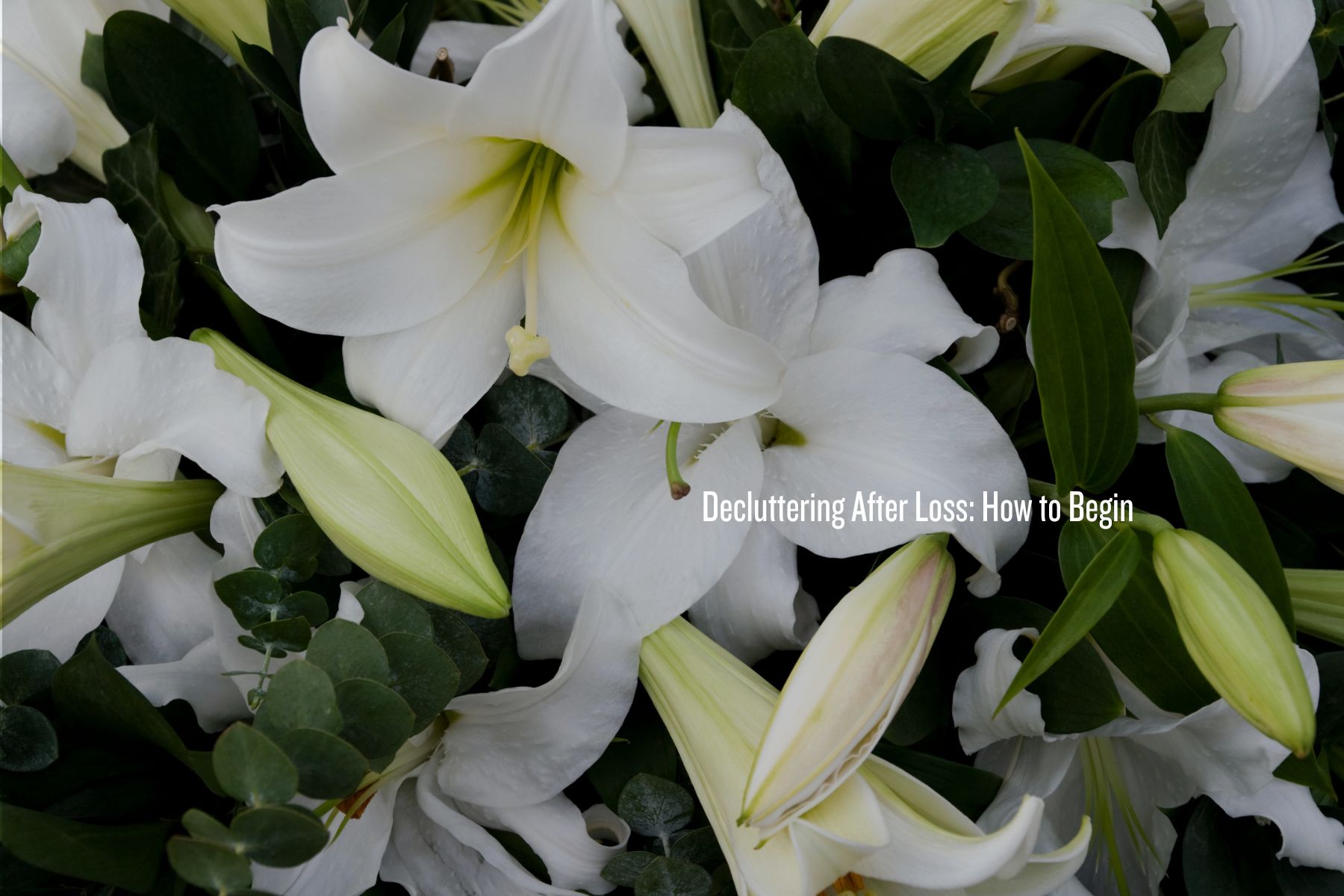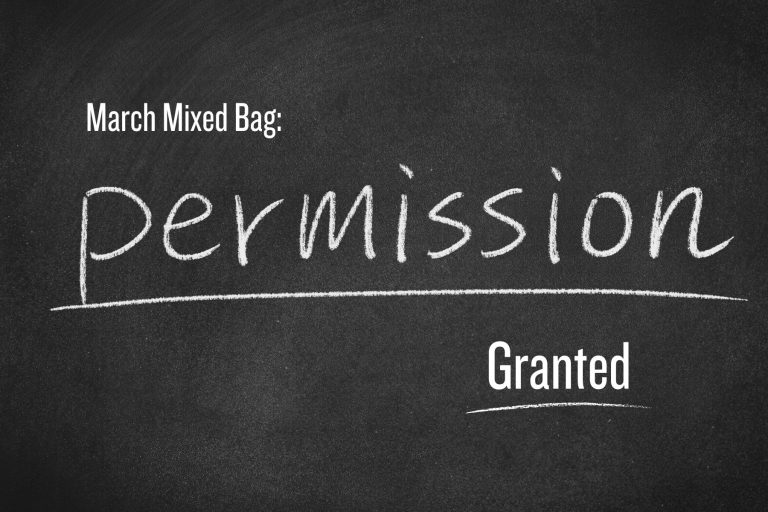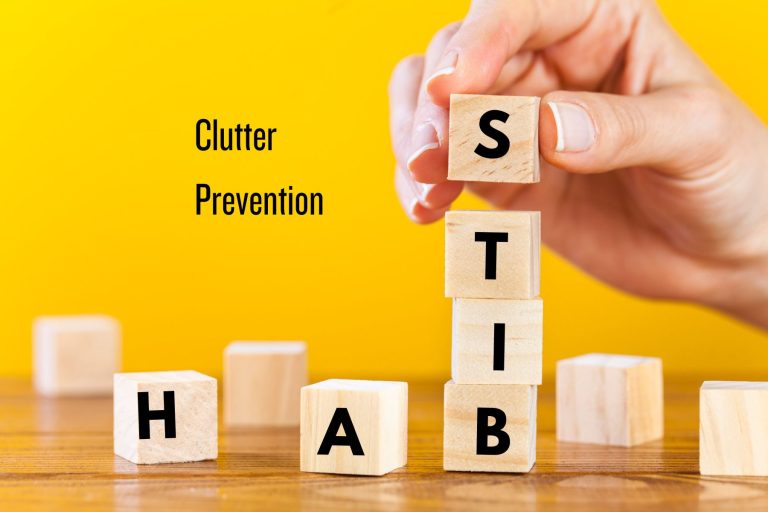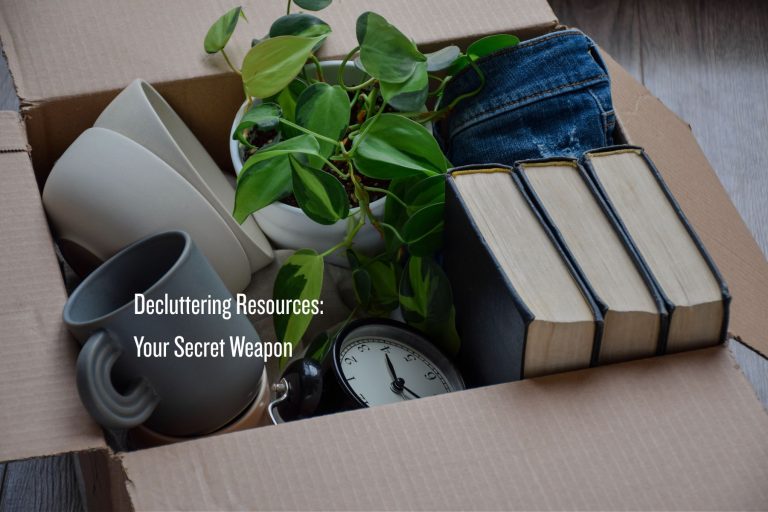Decluttering After Loss: How to Begin
As an Amazon Associate and member of other affiliate programs, I earn from qualifying purchases.

Decluttering after loss is such a tough topic. It’s also a frequent topic for questions from my community. Loss is such a personal and complex landscape to navigate. I find it challenging to answer questions about it in the confines of a comments section so this post is my offering to those who are on a grief journey and unsure how to begin decluttering their loved ones’ belongings.
When someone you love dies, the loss itself is the initial struggle. I recommend coping with that as your primary focus. If you are able, save the decluttering for later. Wait too long to declutter after loss, however, and the task will grow in size and scariness within the confines of your mind. This causes you to avoid it. Some people go for years or decades without going through the belongings of a spouse or parent. So somewhere in the middle is the ‘right time’ to declutter that stuff. Let’s explore some of the tactics I’ve used to help clients get through this emotional heavy-lift.
Give Yourself Space and Kindness

Think about how you would support a friend who is experiencing loss. With patience and kindness, right? Well, these are the graces you need to be able to extend to yourself through this process. The first step in decluttering after loss is preparing your mind for the work ahead. Looking at the things that remind you of your person brings the pain of loss to the surface. Is it going to be uncomfortable? Yes. Are you going to cry a lot? Probably. Are you going to survive it? Absolutely. And you’ll come out stronger on the other side, having processed another piece of your grief.
To bolster your self-supporting skills, draw on these mantras when fear, guilt or apprehension strike:
- The memories of the person I loved are not inside their physical belongings, they are inside me.
- Letting go of the things they owned is not a betrayal
- Moving forward will not diminish the love I still feel for my person
- I can do hard things
These are all true, and it may sound hokey, but saying them out loud to yourself is effective. This is how to begin shifting your mindset. As you start internalizing these truths, the process will become a little bit easier and a lot less painful.
Take it Small and Slow

I recommend breaking the process of decluttering after loss down into smaller pieces if at all possible. The project, by its very nature, is already big and scary. If you think you are going to accomplish it in a weekend you are setting yourself up for a huge emotional crash-and-burn.
Instead, break up your loved one’s belongings into categories. Examples: clothing, books, memorabilia, etc.
Once you have a list of categories, sort it by least-to-most emotionally charged. Start with the easy stuff, like your mom’s toiletries or your husband’s car. Let the grief surface, feel it, and keep going. Get used to the motions of decluttering, step by step. Limit yourself time-wise. At the beginning, the hardest part is getting to the Start Line. Once you’ve accomplished that, quit while you are ahead. Set a timer (this one is my favorite for decluttering) and stop when it goes off.
The next time you re-engage, pick a harder category. Again, let the grief surface – it’s okay to feel it, it won’t kill you. Now keep going. If you notice you are having a hard time, practice briefly detaching from your feelings. Instead of ‘I can’t let this sweater go, my mom wore it all the time’, focus on what you are actually doing. ‘I’m taking a sweater off the hanger and putting it in the box.’ Again, saying it out loud to yourself helps a lot. As you move forward to the harder categories, you’ll be able to draw on the experience you’ve already gained from the early efforts.
Curate and Honor

Decluttering after loss isn’t just about letting go of things, it’s also about deciding what to keep. When you are in your grief, decision fatigue can be especially taxing. I recommend approaching the project as an exercise in curation. How would you like to honor the person you lost? What items would you like to see every day that would make you smile and think of them?
Here’s a trick that works for anyone, but especially if you are up against a time deadline or there is just so much stuff that sorting through all of it would take months. Say your father passed away and you live across the country and have to travel to clean out his house. You can’t use the ‘Take It Small & Slow’ approach because you have a week to take care of business before you go back home. Instead of going through every item room-by-room, you are going to flip the process inside out.
Decide ahead of time how many things you are going to keep, putting some thought into what will be the most meaningful for you to remember and honor your dad. Make a list. Then when you get to the house, spend some time locating the items on your list. (You don’t have to be super-specific. For example if your dad had a collection of LPs you could pick your 5 favorites to keep.) Once you have plucked out what you want to keep, the rest of the work should go pretty fast. Donate and recycle what you can and trash the rest. You’ve not only saved yourself time, but spent the emotional energy you had on something positive and productive that honors your dad.
Nothing I’m recommending here is going to make decluttering after a loss easy. I am fully aligned that it is hard work. That said, I’ve seen these tactics succeed in making this scary chore less painful and ultimately more cathartic. And so much better than punting it year after year.
If you are reading this and are on your own grief journey, I’m so very sorry for your loss. And I’m here to remind you that you can do hard things. Love, Carrie.







My husband died in 1999. I’m decluttering his drawing board next. My daughter wants the envelope containing all his certificates….. from Grade 1 piano to his degree….